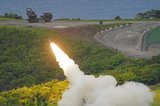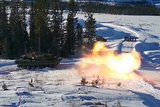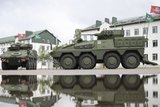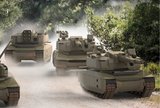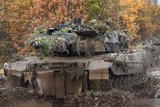Bundeswehr criticises 'old-fashioned' weaponry
In light of current operations, the German Army is continuing to develop its weaponry in order to be able to contend with this 'very dangerous' environment, a military official has revealed.
Speaking at the Future Mortar Systems conference in London on 27 September, Captain Maximilian Gleixner, small arms development officer for the German Army's Infantry Future Developments Section, said that current enemies are using old-fashioned weaponry, including 'roughly aimed rockets, artillery and mortars', and are switching between short and long engagements.
'Small arms fire has become a problem over the last two years,' he continued, with the army having to challenge this threat because it has no control over the situation because of the 'asymmetric opponent'.
'The G36 is and will be the basic weapon of the German Army', Gleixner said of the Heckler & Koch gas-operated assault rifle that has been operational with the Bundeswehr since 1997. Despite being a reliable, low-weight and easy to operate system, it has developed an improved G36 A2 variant, based on feedback from the user, Gleixner explained.
The optics on the G36 are 'no longer state of the art, especially at greater distances', and 'there is no back up sight, for example IR'.
The scope is also too high above the bore, resulting in reduced precision, and it is 'not so great at distances beyond 300m', he conceded.
As a result, the latest variant which is the version used in Afghanistan by German troops, has a picatinny rail on the scope that facilitates the replacement of the optics system, and the Bundeswehr is working on a flat access rail for mounting optics.
The G36 basic weapon with enhancements such as an adjustable shoulder stock, aluminium casing, and an improved muzzle fire suppressor, is currently being tested.
The G3A3 DMR has been deployed to Afghanistan as part of a UOR, and contains a blocked burst function for a more precise shot, and functions at some 600m.
More from Land Warfare
-
Germany signs multi-billion-dollar deals for 6x6 CAVS and GDELS Eagle vehicles
The order is a further boost for the Common Armoured Vehicles System programme which has notched notable successes in the past 12 months. The first vehicle, made in Finland, will be delivered next year with local production expected to ramp up in 2027.
-
![Rheinmetall and KNDS tank tie-up narrows trans-European options]()
Rheinmetall and KNDS tank tie-up narrows trans-European options
The French and German governments signed an agreement in June 2018 to cooperate on the development of a new main battle tank under the Main Ground Combat System programme but the effort has struggled. This new agreement may damage it further.
-
![Hungary set to begin using Hero 400 loitering munitions]()
Hungary set to begin using Hero 400 loitering munitions
Developed by Israel's Uvision and with systems being sold in the thousands to multiple European NATO countries and the US, the Hero family of loitering systems is also in production in the US and Italy, the latter through Rheinmetall.
-
![Croatia orders Leopards and CAESAR howitzers as Lithuania orders more CAESARs]()
Croatia orders Leopards and CAESAR howitzers as Lithuania orders more CAESARs
The Leopard is becoming the tank of choice in central and eastern Europe as Croatia joins Lithuania, the Czech Republic and Hungary in ordering the platform. Lithuania and Croatia have also signed for CAESAR howitzers.
-
![Light Reconnaissance Strike – enabling a vital mission set (Studio)]()
Light Reconnaissance Strike – enabling a vital mission set (Studio)
A new system-of-systems concept will unlock digital integration of sensors and weapons for Light Forces, allowing them to shape the battlefield environment on their own terms and upgrade legacy platforms.










